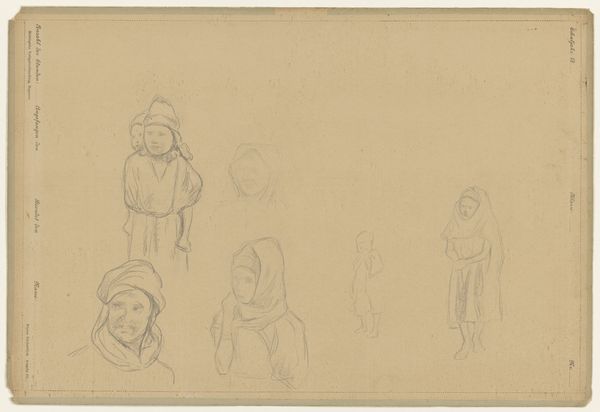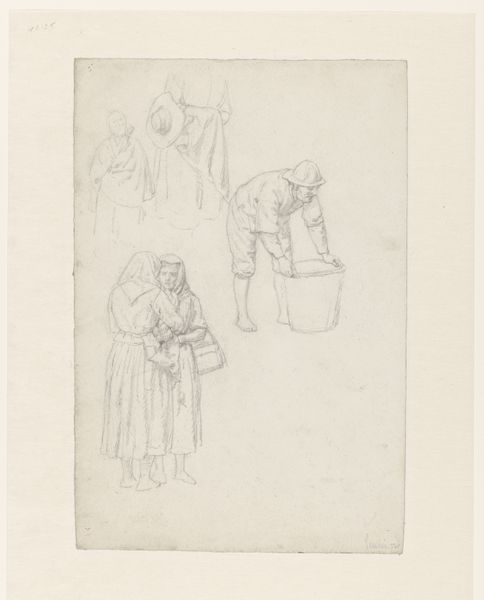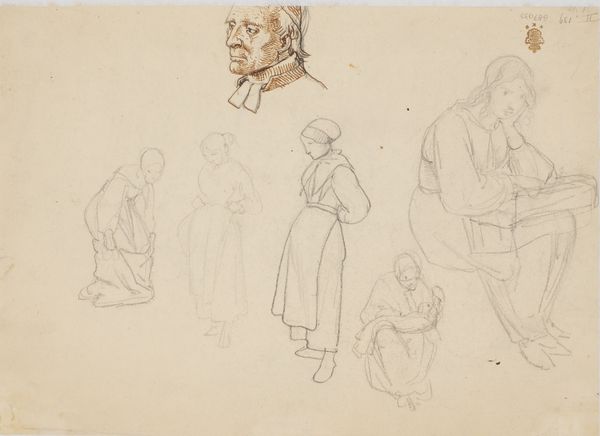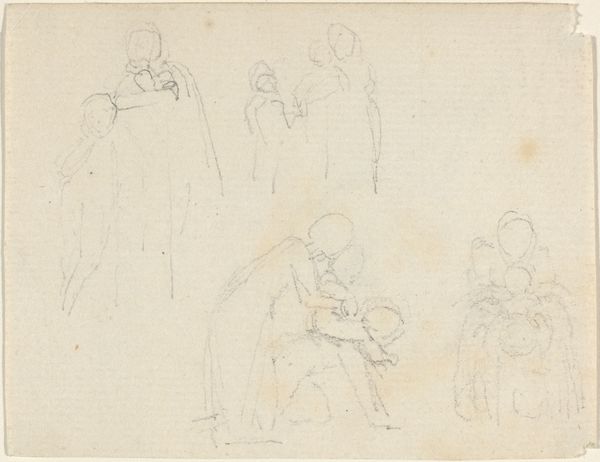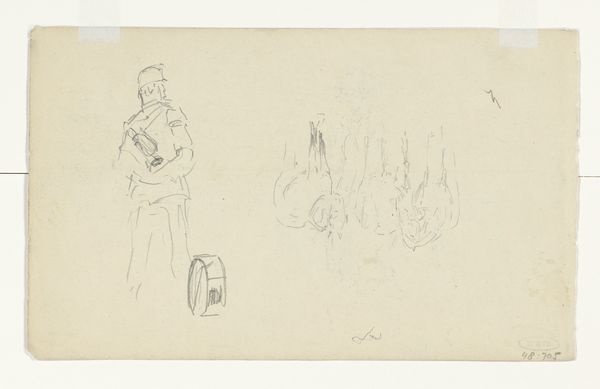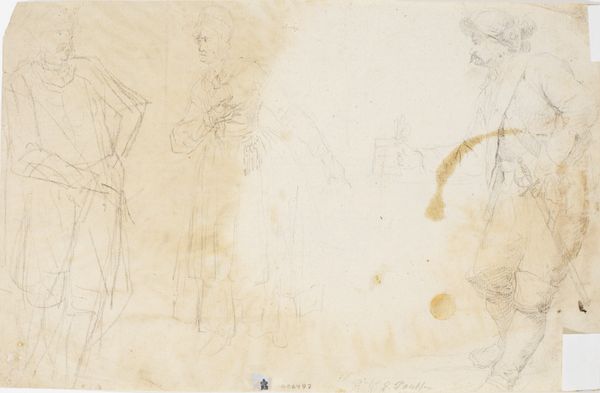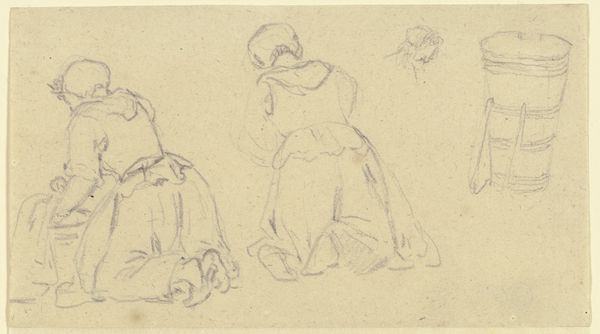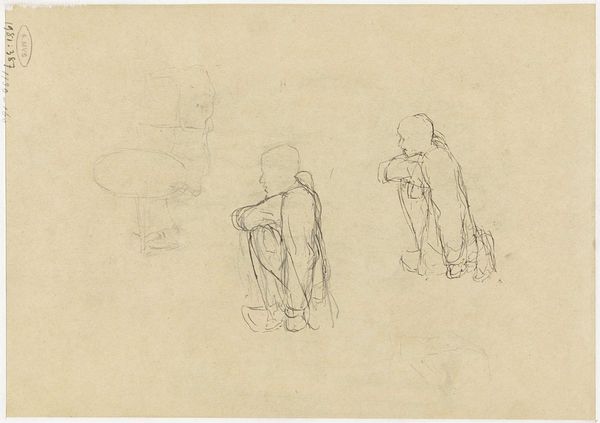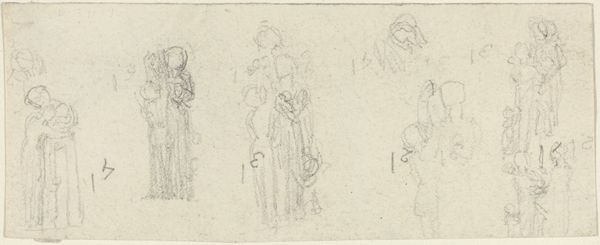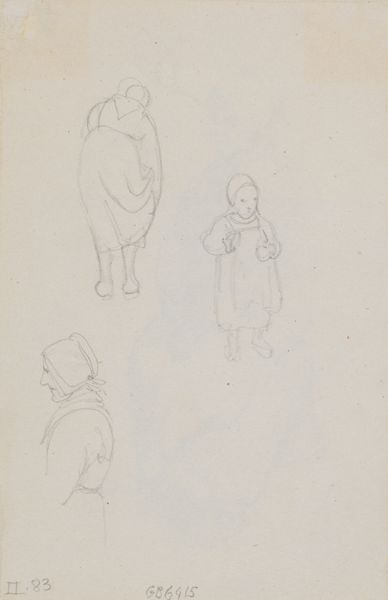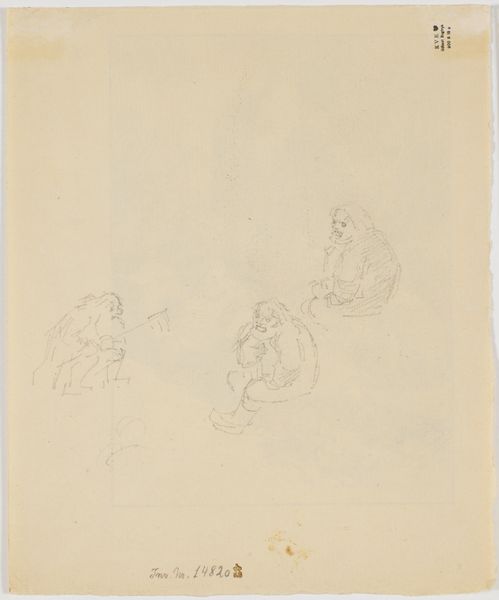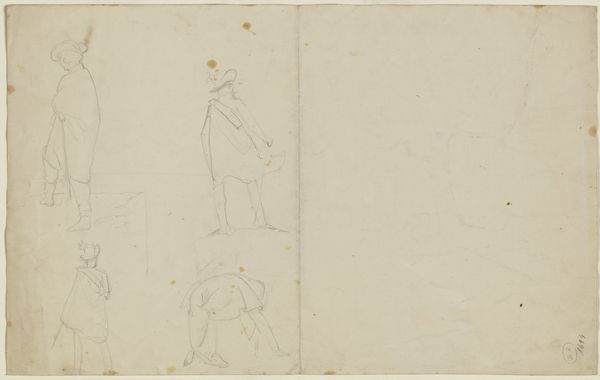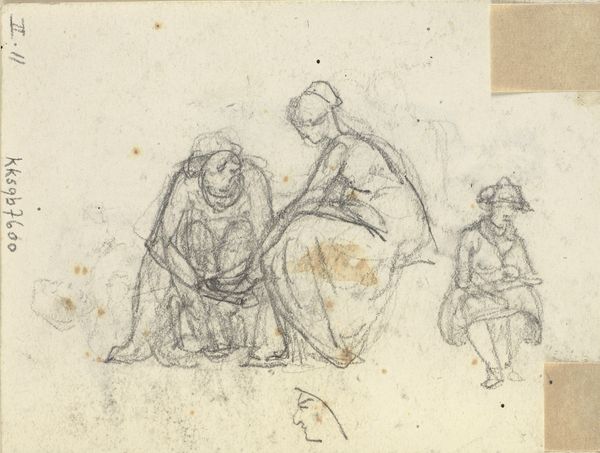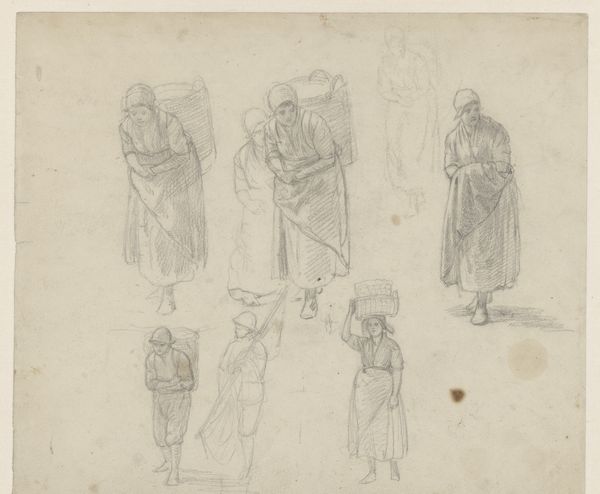
Studienblatt_ Köpfe nach Skulpturen, ein Bildniskopf sowie ein untersetzter Orientale
0:00
0:00
drawing, paper
#
drawing
#
light pencil work
#
16_19th-century
#
paper
#
personal sketchbook
#
german
#
idea generation sketch
#
sketchwork
#
ink drawing experimentation
#
pen-ink sketch
#
sketchbook drawing
#
storyboard and sketchbook work
#
sketchbook art
#
initial sketch
Copyright: Public Domain
Editor: Here we have "Studienblatt: Köpfe nach Skulpturen, ein Bildniskopf sowie ein untersetzter Orientale," a study sheet by Eugen Eduard Schäffer, presumably from the 19th century, done with drawing on paper. It looks like a page from a sketchbook, with several different studies of faces. It has a tentative feel, like he's experimenting. What catches your eye about this sheet? Curator: It’s fascinating to see this sheet in the context of 19th-century academic art. Artists were trained rigorously through copying sculptures and life drawing. But beyond pure skill-building, these "Oriental" sketches reveal the gaze of Western Europe on other cultures and reflect how they constructed visual narratives around identity. Note the emphasis on particular features deemed “exotic” by Western standards. It tells us as much about Schäffer’s cultural environment as it does about the individuals depicted. Editor: So you're saying that these studies aren't just about honing technique, but also about reinforcing societal views? Curator: Precisely. Art doesn't exist in a vacuum. The public role of art in this period was didactic; it taught morals, it established cultural norms, it constructed stereotypes. The act of sketching these "Oriental" types carries implications about power dynamics and representation. The museum system itself, then in its infancy, contributed to legitimizing these perspectives by collecting and displaying such works. Do you see how the grouping here reinforces this point? Editor: Now that you mention it, arranging the drawings together does put them into conversation. And I see that it challenges the romantic idea of the artist sketching only for personal exploration, suggesting they were thinking of an audience, even unconsciously. Curator: Yes, consider how art academies and salons dictated acceptable subjects and styles. Schäffer was likely positioning himself within that established system while simultaneously absorbing and reproducing its underlying assumptions. Understanding these influences illuminates how art shapes—and is shaped by—society. What will you take away from this piece? Editor: It’s a good reminder to look beyond the surface and consider the historical forces that helped create and promote artwork, because these forces influence what we think we know. Thanks for shedding light on this piece.
Comments
No comments
Be the first to comment and join the conversation on the ultimate creative platform.
